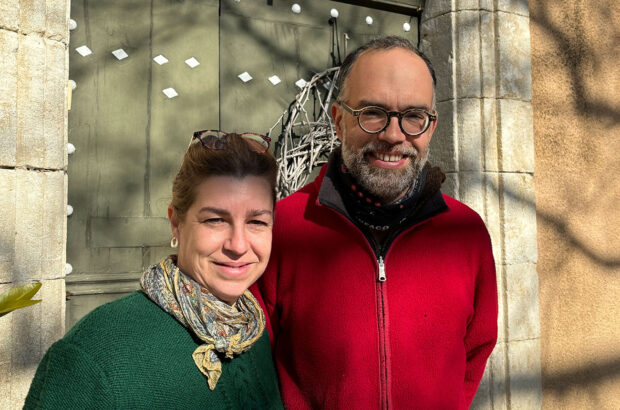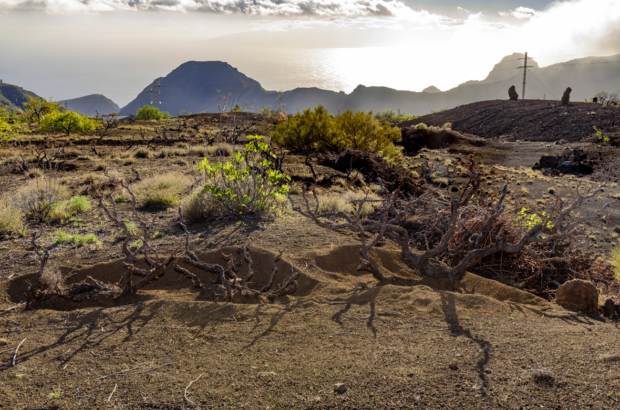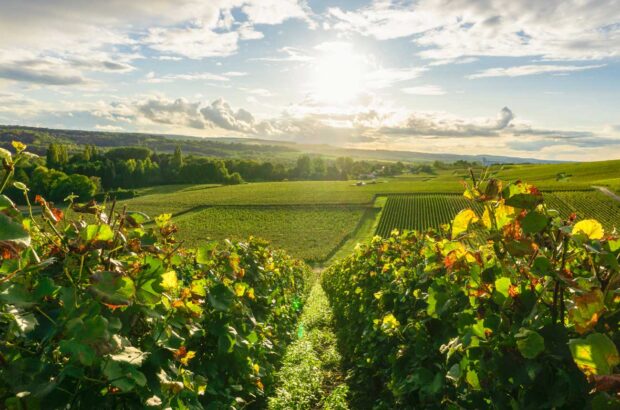Firmly imprinted in the wine canon, Bourgogne has long established itself as a benchmark of quality and character, synonymous with some of the world’s best wines. Bourgogne however, is not primarily a region of glittering estates. Its identity has been built upon the hard work of men and women – small growers and winemakers – with a deep connection to their land and vines. ‘What I love is the work in the vineyard. The fact that it is a craft which is so close to nature,’ says Henri-Vital Besson, Head of Viticulture at Domaine Besson (Givry) and fourth generation of the Besson family, who have been growing vines since 1902, at the helm of the estate. ‘We nurture a plant to collect its fruit … Not many people are aware of the amount of work each bottle of wine represents.’
 Watch the video
Watch the videoThe lived, deeply personal experience of the viticultural landscape makes Bourgogne truly special and is ultimately translated into wines of timeless elegance. ‘We make fruit-forward, terroir-driven wines,’ says Clémence Verret, winner of the Young Talents of Bourgogne award in 2022 and co-manager of her family estate in Saint-Bris-Vineux. ‘Our wines are authentic.’ Such authenticity cannot be taken for granted, as history and nature stubbornly remind producers. Bourgogne has weathered many periods of turmoil and dramatic change – not least phylloxera, two World Wars and recent severe frosts – always re-emerging surer of its capacity to affirm itself.
Young at heart
Such resilience is a product not only of Bourgogne’s impressive history but also its perpetual renewal – making it both wise in spirit and young at heart. With a new generation of growers and winemakers, such as Clémence and Henri-Vital, taking the helm at their historical family estates, there is a sense of endless possibility. That potential is fueled by a fierce determination to preserve a unique heritage in the face of severe challenges. It is also driven by a passionate belief in Bourgogne, highlighting its value to both consumers and winemakers: its terroirs, its gastronomic heritage, its authenticity and approachability.

Expressive and accessible
Not all Bourgogne wines have entered the stratospheric price spheres that have made them inaccessible to younger audiences and somewhat removed from their roots. ‘We remain appealing because we are part of a side of Bourgogne that is not very recognised yet and is still accessible in terms of price and quality,’ says Henri-Vital.
While echoing how being part of a lesser-known Bourgogne allows them to be competitive, agile and reach a younger audience, Clémence mentions diversity as another trump card. ‘People are always surprised by our range of grape varieties. We don’t only grow Chardonnay, Pinot Noir or Aligoté. We also have Sauvignon Blanc, Gamay and Sacy.’ Henri-Vital adds that ‘Bourgogne’s best-kept secrets are its terroirs.’ Precision, diversity and determination are the pillars upon which Bourgogne’s past and future both rest. ‘Each vineyard has a character of its own that needs to be expressed,’ concludes Clémence.
With a long history inextricably linked to its vineyards and grape varieties, the culture of Bourgogne cannot be fully grasped until its winemaking traditions and people are understood. The region’s landscape, growers and winemakers have had their identity shaped by centuries of oenological exploration and mutual discovery. Excitingly, the next chapter of that ongoing narrative is about to be written by the next generation of young, talented growers and vignerons.

Discover more about the wines of Bourgogne
Connect on
Facebook | Instagram | X | YouTube | Linkedin








